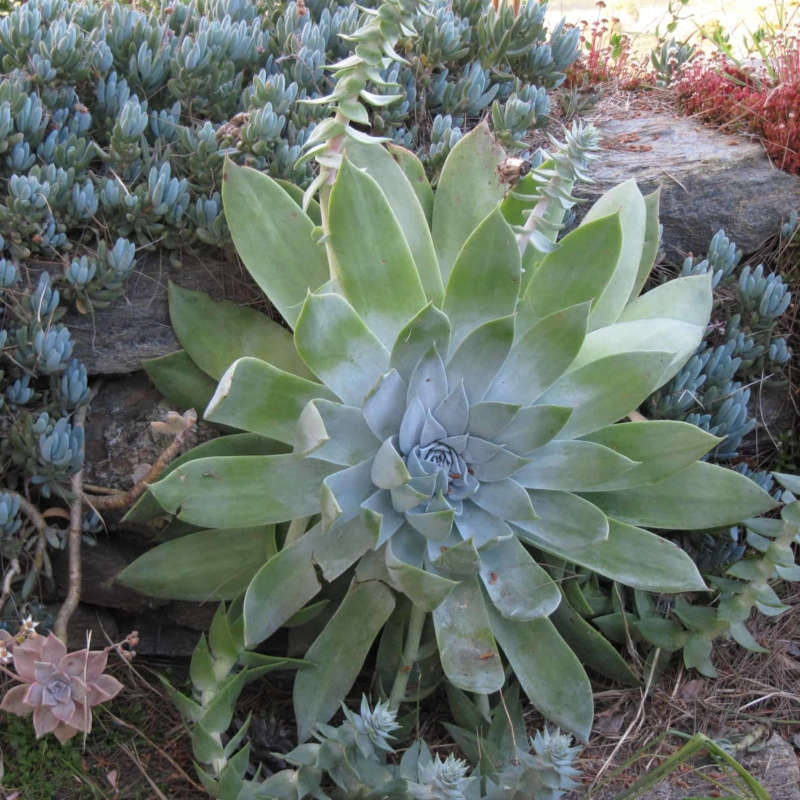

Dudleya succulents native to warm western North American climates (from Oregon to the southern tip of the Baja peninsula) are evergreen perennials that can be used in the garden as ground covers (if you choose a branching species) or as specimen plants (non-branching types will have dramatic rosette shapes.
In a warm climate, succulent Dudleya can be either a useful ground cover (if you plant one of its branching, spreading species) or a dramatic specimen plant with pointed leaves forming a tight rosette.
Beware: Dudleyas will wither in dry summer months, but that is no reason to water them. In fact, it’s best to leave these evergreen perennials succulents alone. Allow them to recover naturally (and rather theatrically) in winter when rainfall occurs spontaneously. Because of their seasonal proclivities and dormancy, interplant Dudleyas with companions that will perform during their low periods.
With blue, gray, or green foliage (and a chalky wax on their epidermis to protect the plants from sun damage), Dudleya is an attractive choice either in a garden bed or a container garden. In a container, plant it in sandy or gravelly soil (a cactus mix is best) and choose other low-water companions.
v5.0
When you register as a free Member of the Remodelista family of websites (Remodelista, Gardenista, and The Organized Home), you gain access to all current posts plus 10 archived posts per month, our internal bookmarking tool, and the community bulletin board.
Member benefits include:
For $5/month ($59.99 paid annually) you'll enjoy unlimited, ad-free access to Remodelista, Gardenista, and The Organized Home and all the benefits of Membership.
Subscriber benefits include:
For $5/month ($59.99 paid annually) you'll enjoy unlimited, ad-free access to Remodelista, Gardenista, and The Organized Home and all the benefits of Membership.
Subscriber benefits include:
Benefits include:
For $5/month ($59.99 paid annually) you'll enjoy unlimited, ad-free access to Remodelista, Gardenista, and The Organized Home and all the benefits of Membership.
Subscriber benefits include:
When you register as a free Member of the Remodelista family of websites (Remodelista, Gardenista, and The Organized Home), you gain access to all current posts plus 10 archived posts per month, our internal bookmarking tool, and the community bulletin board.
Member benefits include:
If at any time you want to become a Subscriber and enjoy unlimited, ad-free access to all our content, just go to the My Account link and choose Subscribe.
Advertising funds our work at Gardenista and helps us provide you with a daily dose of garden inspiration & design. We hope you’ll consider disabling your adblocker for Gardenista so we can continue our mission: a well-designed garden for all.
Thank you for your support.